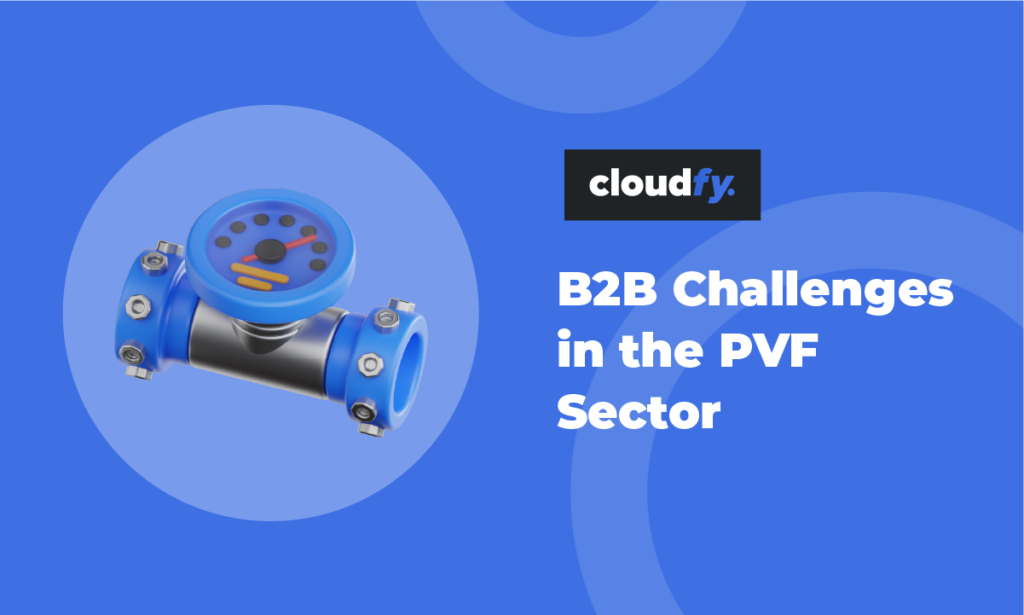Overview by Simon Hartley, Cloudfy Head of Product.
The flexibility of Magento 1 has made it a much-valued platform for the ecommerce community. Unfortunately, it’s this flexibility has that meant that it hasn’t always been the easiest platform for non-expert users or the best for performance.
Rumors about the end of life for Magento 1 started back in 2017. It was originally suggested that it would happen three years after the launch of Magento 2 in November 2015.
So, informed observers were anticipating an end-of-life in late 2018. However, as that date approached, Magento acknowledged that users would need more time to migrate their ecommerce platforms.
In September 2018 Magento announced that support for Magento 1 Enterprise and Community Editions would end in June 2020. That seemed to allow plenty of time for existing users to upgrade to a new platform.
In the meantime, continuing support would cover versions 1.9 to 1.14, released between 2010 and 2014, along with security patches for some earlier editions.
For businesses with third-party extensions for Magento 1, it would also be possible to use an updated version of Magento’s scripting language (PHP) for the core platform to help with migration to a new solution until November 2020.
Knowing that there was still time to make the change there hasn’t been the level of transitional planning you might have expected. There are still around 180,000 Magento 1 sites out there and many business to business (B2B) companies have not yet planned their next steps.
Of course, Magento recommends a migration path to Magento 2, which was designed to address Magento 1 performance issues and to improve search engine optimization.
It undoubtedly offers a comprehensive suite of functions. There are thousands of extensions available and updates are delivered each quarter. However, recognizing how much the marketplace and technology have changed in the last five to ten years, the end of life for Magento 1 is an ideal opportunity for B2B companies to reconsider what they are looking for from their ecommerce platform.
We are seeing the benefits of integrating enterprise, stock control, production and distribution systems with B2B ecommerce portals to deliver a genuine end-to-end experience for customers. In a highly competitive global environment this makes the choice of ecommerce platform business critical.
This article provides information to help you plan your next ecommerce steps and prepare for the end of life for Magento.
- Ecommerce Design
Moving to a new ecommerce platform is an ideal opportunity to review your design and compare it with the best in your sector, or even in the world. To do this effectively, you will need to have a clear idea of what works well for your business, what can be improved, and what you want to achieve in the future.
A detailed audit of the performance of your current platform and how it contributes to your business will be important.
At the very least you will want to maintain the functionality and user experience you currently offer, but you might discover that your buyer’s expectations and needs have moved on since you set your original objectives.
There are multiple audit checklists available. Here is a summary of the key points we recommend you should consider.
Magento commissioned Forrester to provide a study in the USA, the UK, Germany, China, and Australia to explore what is needed to be a leader in B2B ecommerce.
Self-service – an effective ecommerce experience is a key focus to improve customer satisfaction. By enabling your buyers to research and make their purchases at a time that suits them using their preferred device they will become more active and loyal customers, improving your revenue growth and financial performance.
Performance – Magento 1 performance could mean non-cached pages took five to 10 seconds to load, which isn’t acceptable for the current generation of B2B buyers. Server or hosting resources and installation issues could all slow things down. There are a number of ways to optimize performance, if you have the technical know-how to implement them.
Magento 2 is up to 20% faster and can handle a much larger product catalogue. However, rebuilding your ecommerce platform is a significant undertaking and there are many options you can consider. Taking a whole-business view will help you to make the right choice.
Reliability – Speed, efficiency and reliability throughout a buyer’s journey will make the difference between improved conversion rates or abandoned purchases. B2B businesses can’t afford to compromise on the reliability or quality of the experience with unsupported functionality, so those relying on Magento 1 will have to make some important decisions very soon.
Solution focus – Your ecommerce platform should be designed to meet the requirements of your business. While re-purposing extensions to Magento’s core functionality would once have been a cost-effective option there are now powerful application programming interfaces (APIs) and out-of-the-box integration options for major business systems that bring tailored corporate-scale functionality to smaller businesses.
Technology – B2B companies that already have established leadership, resources, and a cross-functional strategy for ecommerce are poised to take advantage of the predicted growth in B2B ecommerce. Those with the most mature approach will be able to take advantage of the latest technology to offer a more streamlined buying experience, increasing customer satisfaction and improving their competitive advantage. For businesses that haven’t yet developed to this level a partnership with an experienced third party can help them to move ahead.
Considerations: Moving on from Magento 1
B2B user experience
Your conversion rates will suffer if your website is difficult to use, so this is the perfect time to review the quality of experience you’re delivering. Expectations in the B2B marketplace are being driven by the way major retail brands deliver user experiences and the fast and intuitive responses offered by Amazon.
If your buyers can’t immediately see that your site offers what they are looking for they will leave straightaway. Your page designs need to be clear and attractive and contain all the right information. To keep them up to date they also need to be easy to maintain.
Your new platform must have impeccable credentials for user experience from fast page load times to intuitive and relevant search functions and easy checkout processes.
Customer service
One of the major benefits of a modern B2B ecommerce site is the power it gives your buyers to manage their purchasing process. More and more customers want to complete their research online before contacting a supplier directly. Many now prefer to complete the whole transaction online.
If customers need advice, they will expect options such as chat bots to handle common queries. They will want to move easily from their online investigations to speak with someone in your sales or customer service team when needed.
For larger accounts, registered users will want to see personalized landing pages and menus, access to their buying history and easy repeat ordering. Price breaks, special discounts and interfaces with their company’s purchasing systems and workflows can all be provided as standard functions, so don’t settle for anything less.
Product catalogues
Your product catalogues should be comprehensive and clear, supported by data sheets and multiple images. While Magento 1 was limited to a few thousand products, tens of thousands can now be included and managed easily.
To perform well in search engine results and attract the attention of your buyers, your product and category pages must feature plenty of unique content. Your new platform must be easy to edit and maintain, ideally helping you with easy and intuitive functions to create clear and well-branded content.
Ecommerce system security
At the moment, Magento actively searches for vulnerabilities and provides protection against them. For Magento 1 this will come to an end after June 2020 and, importantly, online criminals will probably be looking for exposed ecommerce sites that are still using Magento 1. Some of the most common attacks could slow your site’s performance or even bring it down, seriously damaging your business.
Without security updates your checkout and your customer’s data could also be at risk, meaning you could be in breach of data protection laws.
One of the most effective ways to maintain the security of your system is to move to a Cloud-based software as a service (SaaS) provider. Security updates will be deployed immediately in the Cloud, so you won’t have to wait for upgrade releases. Because this is their primary business you can also be confident that they are delivering the highest levels of security.
Hosting your B2B ecommerce platform
Cloud-based B2B ecommerce solutions aren’t new but they are playing an increasingly important part in the development of successful modern solutions compared with on-premises options.
Traditionally, the software and hardware, on-premises hosting, and dedicated technical resources required significant capital investment. Ongoing funding for implementation and continuing support are significant overheads. Cloud-based SaaS solutions are available for monthly subscriptions, without initial capital investment, making them a financially efficient option.
If you are changing the ecommerce platform for your business, then a Cloud-based solution will allow you easily implement and use the latest new technologies. They are also scalable, flexing when you’re busy and capable of growing with your business, so you don’t have to pay for capacity you don’t need.
Delivery partners
Because Magento is open source there’s a whole community of developers creating new and interesting additions to its core functionality. New features, optimized web design, and improved usability have all helped businesses to stand out in a competitive marketplace.
However, extensions for Magento 1 won’t be covered by future fixes and patches. If you want to continue using them, you will need to have the expertise yourself or work with a third party who is willing to maintain solutions for a platform that will soon become obsolete.
In fact, many B2B companies have always found it challenging to develop and maintain these extensions and enhancements, many of which were originally created for the consumer market. In some cases, the experience has not been to the standard they would have hoped.
Now is the perfect time to make a move to a platform that has been specifically designed for the modern B2B market.
Integration with business systems
Many businesses are faced with the challenges of managing legacy business systems alongside a modern ecommerce platform. It can be one of the biggest barriers to progress and can seriously limit competitiveness.
While you will have analyzed your sales and order processing when you implemented your Magento 1 platform, successful integration with other business systems depends on a complete end-to-end understanding of your business processes. Each business is unique, and the solution should be too.
Partial integration could involve sharing ‘packets’ of information between your ecommerce and enterprise systems at certain times; overnight for example. This can improve processes to some extent but will involve delays and can lead to errors.
Increasingly, B2B ecommerce companies are realizing the benefits of full business systems integration. These include:
- increased business opportunities for the same level of investment
- improved conversion rates and flexibility for sales teams to become trusted advisors who develop customer relationships
- reduced costs though process automation and less errors
- enhanced customer insights, based on accurate real-time information
- access to new markets identified through improved market intelligence
- improved efficiency based on a single source of information for the whole business.
Price and cost of ownership
The relative benefits of maintaining and enhancing an existing on-premises platform or moving to a Cloud-based alternative can be difficult to assess.
The first obvious benefit of an on-premises solution is that you have complete control, but this can be a disadvantage too. You are responsible for purchasing and maintaining the hardware, software, security, and managing the cost overheads that come with them.
When you want to introduce upgrades, you will need in-house expertise or a trusted business partner to develop, customize and extend them. This can be time-consuming and costly and can slow down your ability to respond to new market opportunities.
In contrast, Cloud-based ecommerce is hosted and managed by your supplier. The IT infrastructure, data security, upgrades and fixes are their responsibility. Because providers are immersed in the world of ecommerce, they have a level of expert knowledge that is difficult to maintain in-house. It’s in their interests to remain and the very leading edge of development.
Initial costs are typically much lower because the solution can be quickly implemented to meet your requirements and can be easily accessed through a web browser. You will know your subscription payments in advance and further enhancements can be cost-effectively managed.
Maintenance and upgrades
One of the compelling arguments for an on-premise system is reliability and risk management. As long as you have sufficient resources you can minimize the impact of external influences.
However, upgrades will need to be deployed and the potential for disruption to your business is significant. Unforeseen effects on existing software and systems can lead to time-consuming rollbacks and diagnostics.
This can lead to an environment that is reluctant to change or only implements changes slowly. Businesses can find themselves relying out-of-date technology that cannot deliver the level of service customers expect.
Cloud-based ecommerce solutions are continually enhanced automatically. You can be sure you’re always using the latest, most advanced version.
We’re here to help you to make the best possible choice for your business in 2020, so please get in touch.






